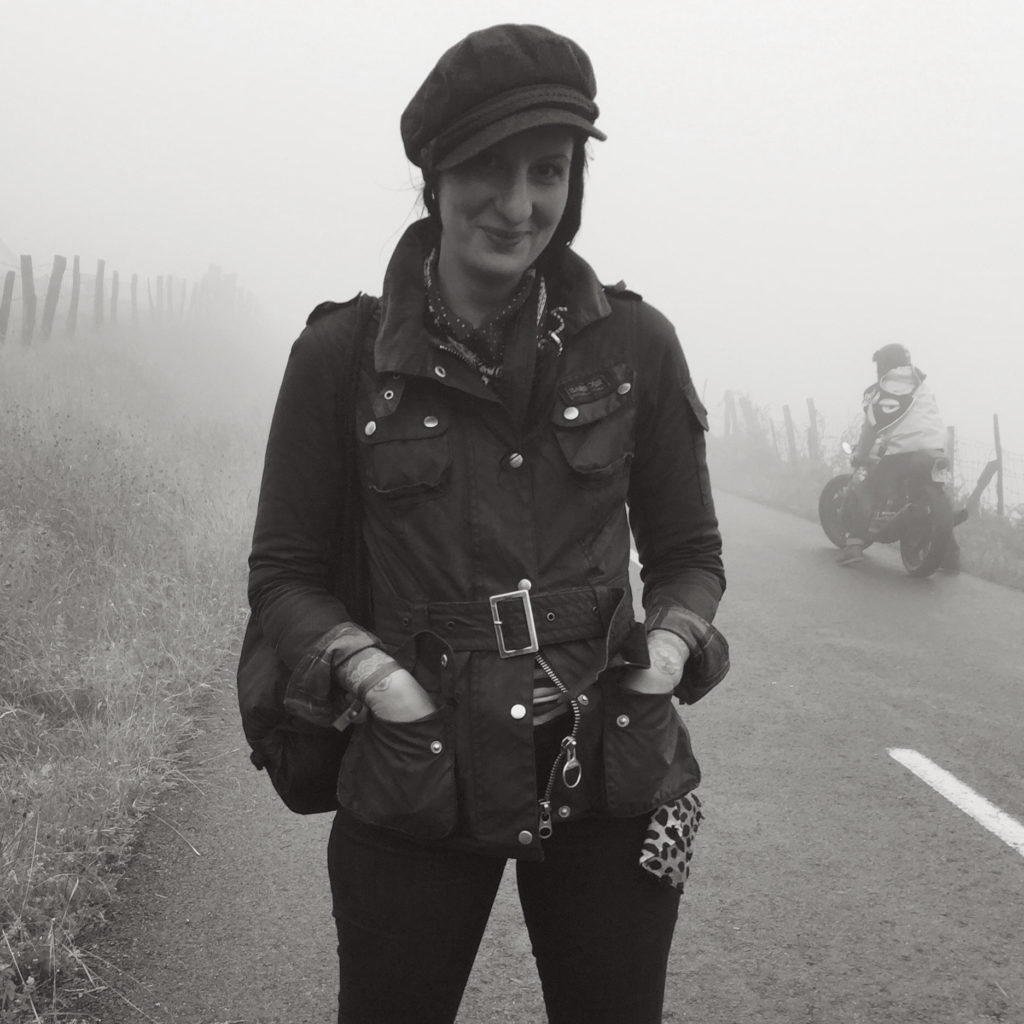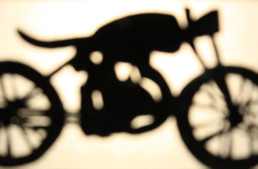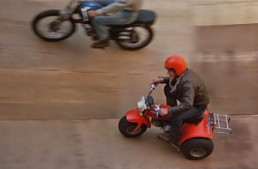In March we featured the trailer for the feature length documentary, The Artist and The Wall Of Death (2023), directed by Maurice O’Brien. The film follows Stephen Skrynka’s five-year obsession to build his own Motordrome, and learn to ride it. In the film, we quickly discover that Stephen is as unique as his project, and while building a Wall of Death proves an epic struggle, he is rightly the center of this fascinating story. He embarks on his journey via two friends who built a Wall in their backyard (and on whose story became the 1986 film Eat The Peach), but Stephen’s journey has its own twist, with the Wall he constructs becoming a detailed work of art itself that evolves into a vibrant art space.
The Artist And The Wall Of Death is now available worldwide to screen on iTunes. Watch it HERE. To celebrate its release, we caught up with the Artist in the interview below.
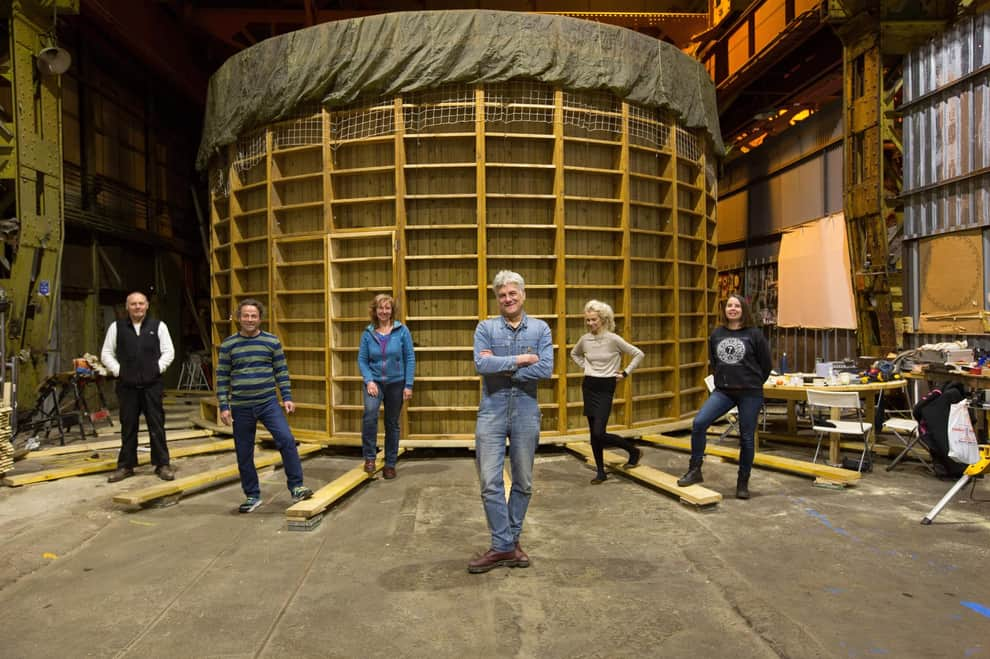
Stephen Skrynka (center) and several players in his artistic cohort. [Robert Perry for The Scotsman]
Stephen Skrynka
“It’s the nearest thing to being alive” – Richard Thompson
I began to construct the wall in the first week of lockdown in my shed. Luckily I had enough wood stockpiled to get me started. I worked in total isolation under no illusion about the size of the task but I realized that if I did not start, I would never start. I had no idea if or when I would finish this mammoth task. “Start a huge, foolish project, like Noah. It makes absolutely no difference what people think of you.” (Rumi) I originally trained as a cabinetmaker so it was important for me to build it to the best of my ability using only traditional woodworking joints such as mortise and tenons, dado housings and finger joints….and no nails, in the traditional manner of a Japanese temple building. By its nature, this challenge created a thing of great beauty and great strength. There were no drawings, everything was worked out live. I worked like this from March until August, day and night. When I outgrew my shed I spilled out into the garden.
Then the lockdown eased and I was able to move all the work into a shipyard on the Clyde called Barclay Curle in Whiteinch, Glasgow. I phoned a number painted on the side of the building that said space was available. By sheer good fortune, Bradley, the owner of the building is from a Fairground family and believed in the project. He and the buildings co-owner Andrew offered me the space to carry on with the work for free and without their generosity and support there is no way I could’ve carried on. Thereafter, I was joined by a group of people who wanted to help. They were curious and could see the level of devotion that was required to make this thing real. The word was out, volunteers appeared one by one and before too long we were a dedicated group of mavericks, comrades from all walks of life, all learning from each other and spurred on by the vision. It gave us all a sense of purpose and a routine during very difficult and dark times. In total we have spent over 14,000 hours building this using hand tools.
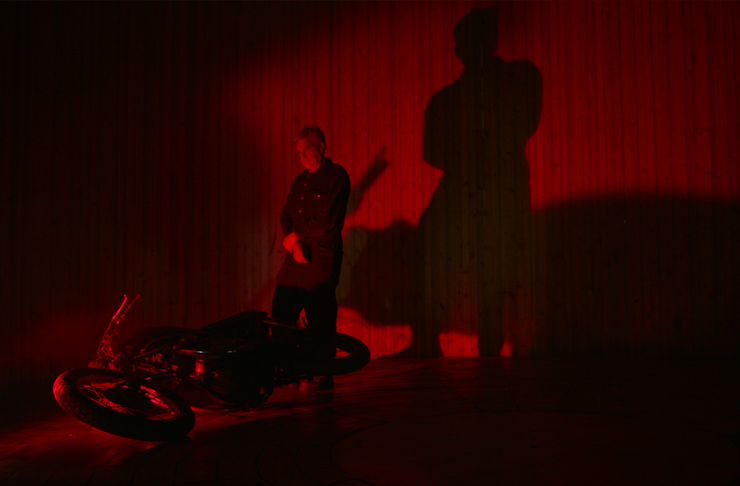
Soon we ran out of wood. People we didn’t know started to give us money, mainly modest amounts of money, £20 here, £50 there, then somebody anonymously put an envelope with £500 through my door with a note saying keep up the good work. Everybody started believing in what we were doing. It was like a miracle. In this way we carried on until we were finished. The whole project I see as a work of art in itself. It is impossible to put a cost on something like this. It is priceless because it is beyond being quantified in financial terms. This has made us free from the pressure of the corporate world, it has enabled us to use the space in very interesting ways. We have had cinema screenings by independent filmmakers, plays, concerts, art exhibitions plus fundraising events for Ukraine (I rode the wall and did 109 as a fundraiser). My father was a Ukrainian refugee from the Second World War.
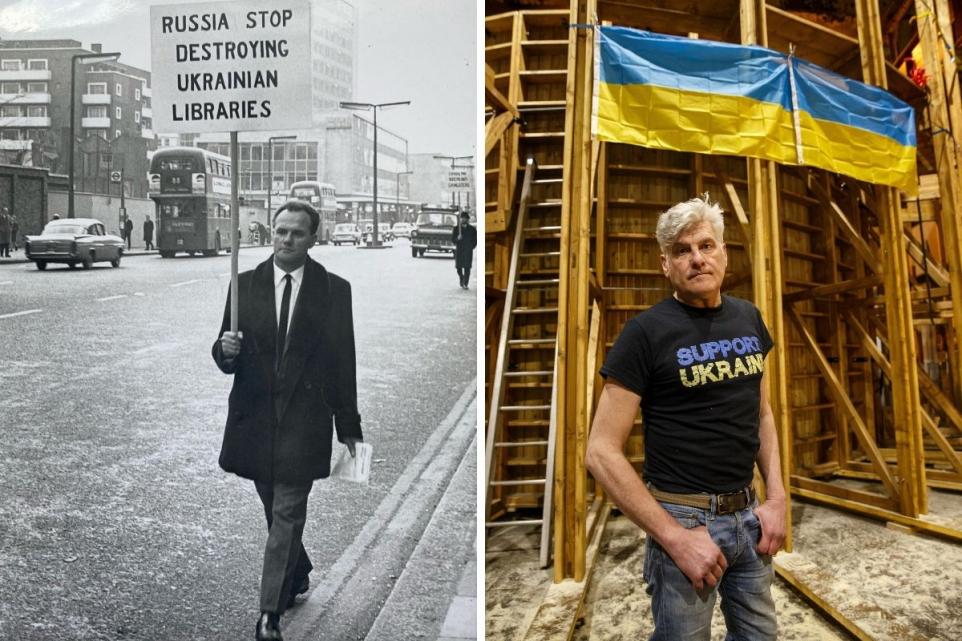
Artist Stephen Skrynka and his late father Volodymyr, protesting at the Russian Embassy in London in the 1960s. [Colin Mearns for The Herald Scotland]
I am very lucky that I was taught to learn to ride by Ken Fox about 15 years ago and grateful that he took me on. I was, without a doubt, the world’s worst and most accident-prone apprentice. I found it so difficult to get the hang of. Eventually I managed it but not without many accidents. It is the strangest feeling of exhilaration, living on a knife edge, poised between serenity and oblivion. I can only ride…doing actual tricks is a whole other ball game. If you see a professional Wall Of Death trick-rider it takes it all to another level. Through years of experience they somehow manage to make it look so easy.
My children have been very supportive and I think if you asked them they would probably say they’re quite proud of me. If they were worried for me, they hid it very well.
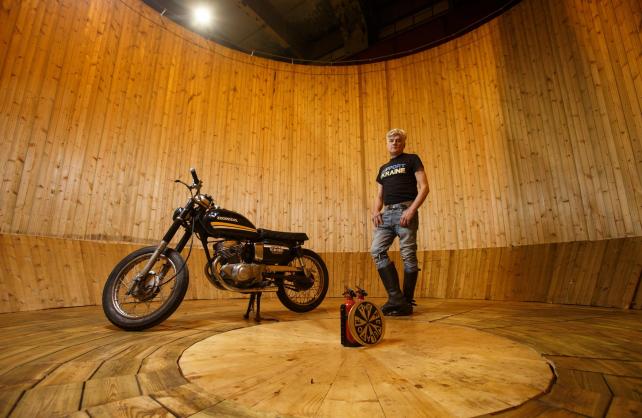
Stephen with one of his stripped-down Wall bikes. [Colin Mearns for The Herald Scotland]
For £3.50 you can watch three people risk their lives for 15 minutes in front of your very eyes as part of a Fairground Attraction which goes back 100 years. To quote Richard Thompson “it’s the nearest thing to being alive.” I believe that art should always in some way reflect life and death, to me that is its very purpose. So in my opinion, the Wall of Death isn’t just a Fairground Attraction but actually a pure form of art. An art form which is choreographed and balletic, an art form which has not changed in 100 years and yet still affects people as deeply as it ever did. The majestic skill and daring required is difficult to take in when you see it performed before your very eyes. As a spectator you are very much part of it and being at the top looking down you are making an implicit pact with danger. It is magical realism in the true sense and so visceral, I have seen at least five people in the audience faint.
The Wall Of Death riders I have met are made of something very special, their total commitment goes beyond their bravery and riding skills, it is actually a way of life, a hard life on the road. People sometimes imagine that these are superstars that just turn up in a limo to perform and then disappear to their hotel rooms. Reality could not be further from the truth, they have to know how to load up, build up the wall, pull it down, drive the lorries, see to all the mechanics and meticulously maintain their 100 year old motorcycles which they depend on with their lives … and all done on a shoestring. It takes grueling stamina and determination to do this season after season.
Part of the magic of the Wall of Death is it seems to appear in a community as if by magic, it’s there for a day or two and then disappears; almost like a dream, you are left wondering whether you actually imagined it all. There are few Walls left in the world, quite a dwindling number and yet in our digital age It is unique to be confronted by something so powerfully real. I think it is so important to keep this tradition alive.
As an artist my interests are twofold, the first, as I mentioned, is to keep the tradition alive and the second is to celebrate the Wall Of Death as an Artspace in and of itself. The Wall of Death I see as an archetypal architectural space which has resonance with the Brochs of Scotland (stone circular buildings from 300 BC) Jeremy Bentham’s Panopticon, the Trulli of Apullia in Italy, the Pantheon in Rome and Shakespeare’s globe, which he himself called the “Wooden O” – a place where you can be transported into other worlds. The poetics of this space go very deep.
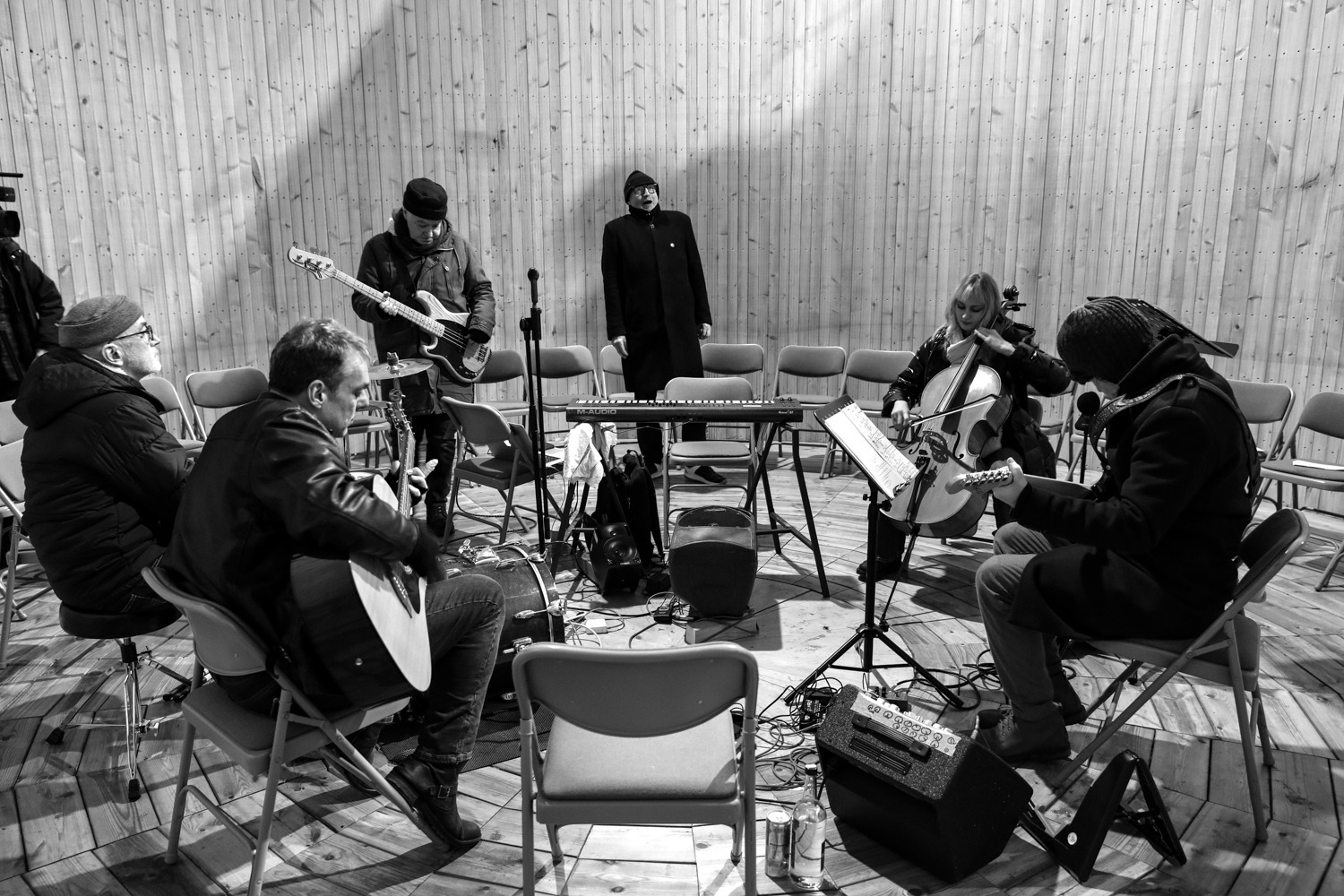
A performance within the Revelator. [Chris Leslie for The Drouth]
Our Wall Of Death is called the Revelator. It is a nomadic art space which will be used to create experimental and community-based artworks and performances it will be used as an art school, a cinema, a lecture theatre a performance space, an arts and craft workshop where traditional skills are taught such as Fairground sign writing and woodcarving. Uniquely, it is a celebration of both the traditional and the experimental. The reason we are able to do this is because we are free of external demands, free of corporate pressure. It is not about making money it is all about exchanging ideas and bringing people together, creating new audiences and exposing art to disparate groups and communities. The intention behind this is also to introduce new audiences to the Wall Of Death performance. I am aware that people who go to see a Wall of Death are from quite specific groups who may have an interest in motorbikes or fairgrounds or steam rallies. My quest is to bring audiences from all different walks of life to appreciate this art form.
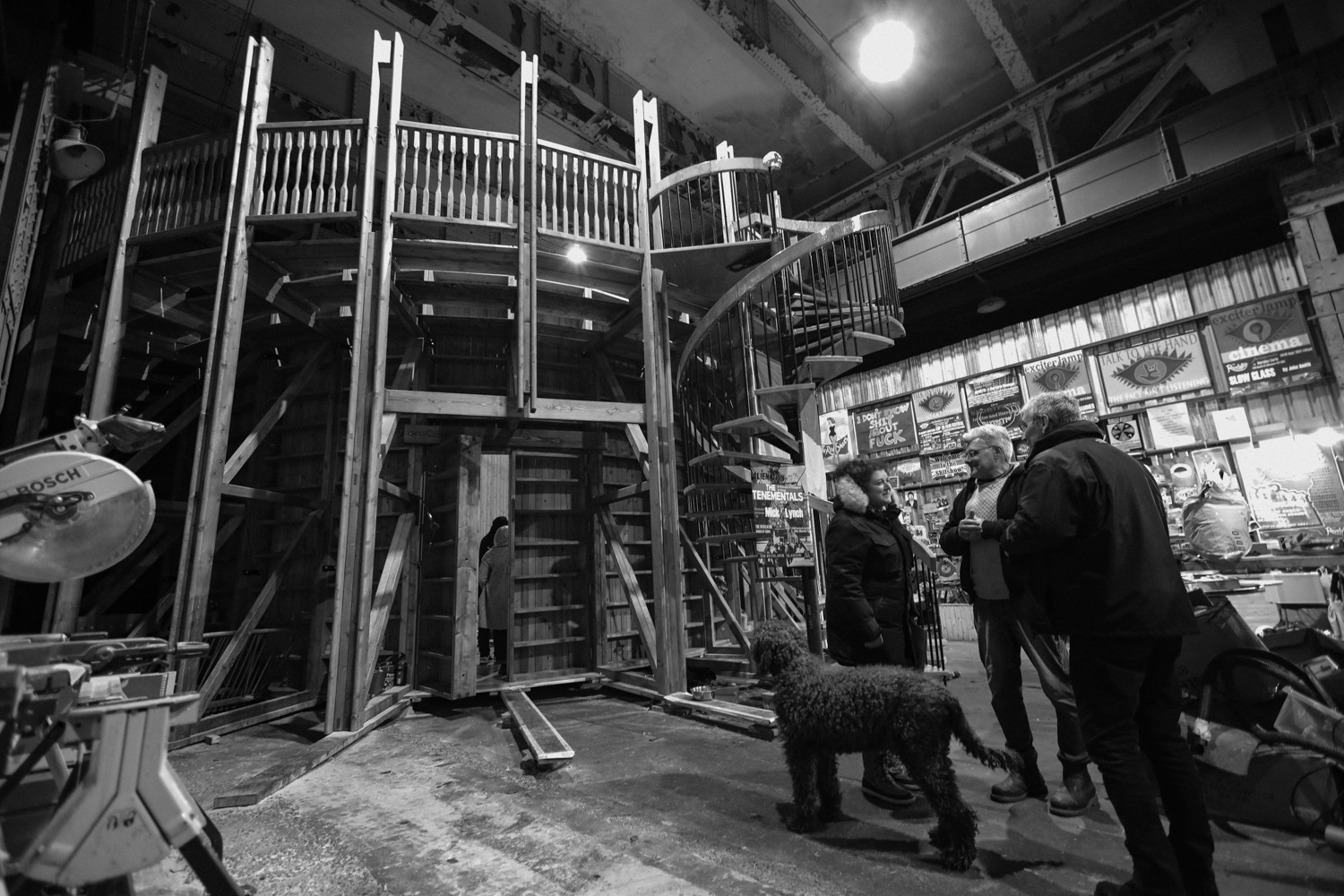
The Revelator with its spiral staircase and viewing gallery. [Chris Leslie for The Drouth]
The Revelator has come to represent a radical way of making things happen, reconnecting us with how things used to be done. We have only managed to create this magical project by working under the radar without asking permission or seeking funding from bodies which would enforce prohibitive restrictions on what we are trying to do. This has given us the freedom of expression that is unfettered from market forces and pressures from the corporate world. Any money generated from events and happenings in the space will be plowed straight back in. On high days and holidays we plan to put on traditional Wall Of Death performances. All the riders in the world are welcome to come and perform. The Wall Of Death community maybe quite small in numbers but it has a very long reach.
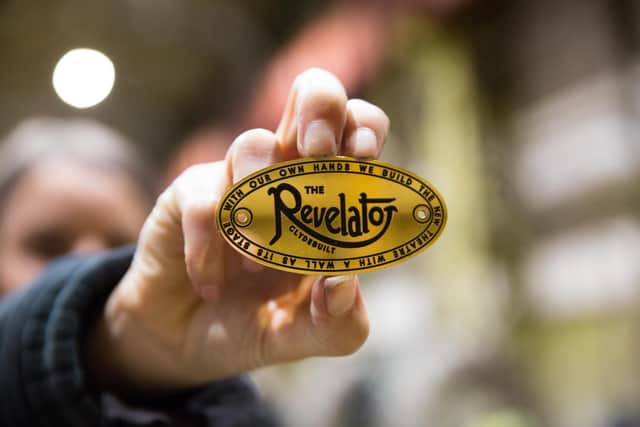
“With our hands we built the new theater with a wall as its stage” – the Revelator motto. [Robert Perry for The Scotsman]
LINKS
For the history of the Wall of Death, read our groundbreaking research on its origins.
